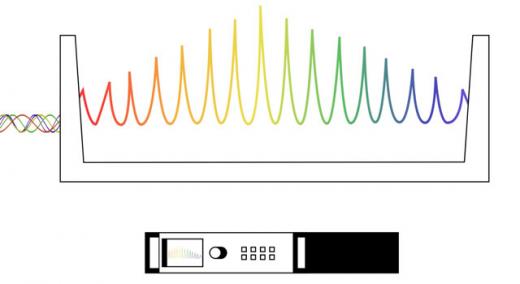An improvement to a Nobel Prize-winning technology called a frequency comb enables it to measure light pulse arrival times with greater sensitivity than previously possible—potentially improving measurements of distance along with applications such as precision timing and atmospheric sensing.
|
ADVERTISEMENT |
The innovation, created by scientists at the National Institute of Standards and Technology (NIST), represents a new way of using frequency comb technology, which the scientists have termed a “time programmable frequency comb.” Up until now, frequency comb lasers needed to create light pulses with metronomic regularity to achieve their effects. But the NIST team has shown that manipulating the timing of the pulses can help frequency combs make accurate measurements under a broader set of conditions than has been possible.
…

Add new comment